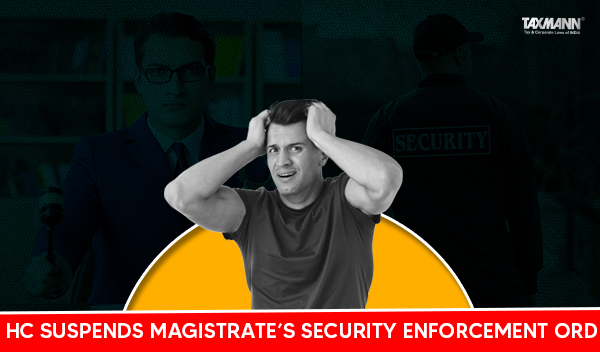HC Suspends Magistrate’s Security Enforcement Order for a Week to Allow Petitioner to Approach DRT
- Blog|News|FEMA & Banking|
- 2 Min Read
- By Taxmann
- |
- Last Updated on 24 February, 2024

Case Details: Subhash Chand Kathuria v. Punjab National Bank - [2024] 159 taxmann.com 598 (HC-Delhi)
Judiciary and Counsel Details
-
- Ms Mini Pushkarna, J.
- Bharat Bhushan & Pulkit Sanghi, Advs. for the Appellant.
- Nitin Garg & Rahul Kumar, Advs. for the Respondent.
Facts of the Case
In the instant case, the petitioner took a credit from the respondent bank/secured creditor in which the respondent kept the property of the petitioner as collateral. The loan account of the petitioner was classified as a Non-Performing Asset (NPA).
Subsequently, the respondent filed a case before the Chief Metropolitan Magistrate (CMM), North-West, Rohini Court to assist the secured creditor in taking possession of the secured asset against the petitioner. The CMM allowed the petition vide the impugned order. The receiver was also appointed.
Consequently, the petitioner received a notice from the receiver appointed by the CMM to take possession of the property in question. Thereafter, the petitioner filed an instant petition seeking to quash the impugned order and submitted that the steps taken by the respondent were not in accordance with provisions of the Securitisation and Reconstruction of Financial Assets and Enforcement of Security Interest Act, 2002 (SARFAESI Act). Further, the impugned order was passed without having territorial jurisdiction as the property in question falls within the jurisdiction of the Metropolitan Magistrate North District.
High Court Held
The High Court observed that the Debt Recovery Tribunal (DRT) has jurisdiction under section 17 of the SARFAESI Act, 2002 to assess whether the steps taken by the secured creditor for enforcement of security, are in accordance with provisions of the SARFAESI Act. Therefore, the petitioner ought to approach DRT, since there is an efficacious remedy available.
The High Court noted that Section 17(2) of the SARFAESI Act categorically clarifies that any person, including the borrower, who is aggrieved by any of the measures referred to in Section 13(4) of the Act, taken by the secured creditor, shall move an application to the DRT having jurisdiction in the matter.
The High Court held that since the impugned order was without any jurisdiction, therefore, the same was to be suspended for a period of one week, in order to grant the opportunity to the petitioner to approach DRT under section 17 of the Act.
Disclaimer: The content/information published on the website is only for general information of the user and shall not be construed as legal advice. While the Taxmann has exercised reasonable efforts to ensure the veracity of information/content published, Taxmann shall be under no liability in any manner whatsoever for incorrect information, if any.

Taxmann Publications has a dedicated in-house Research & Editorial Team. This team consists of a team of Chartered Accountants, Company Secretaries, and Lawyers. This team works under the guidance and supervision of editor-in-chief Mr Rakesh Bhargava.
The Research and Editorial Team is responsible for developing reliable and accurate content for the readers. The team follows the six-sigma approach to achieve the benchmark of zero error in its publications and research platforms. The team ensures that the following publication guidelines are thoroughly followed while developing the content:
- The statutory material is obtained only from the authorized and reliable sources
- All the latest developments in the judicial and legislative fields are covered
- Prepare the analytical write-ups on current, controversial, and important issues to help the readers to understand the concept and its implications
- Every content published by Taxmann is complete, accurate and lucid
- All evidence-based statements are supported with proper reference to Section, Circular No., Notification No. or citations
- The golden rules of grammar, style and consistency are thoroughly followed
- Font and size that’s easy to read and remain consistent across all imprint and digital publications are applied





